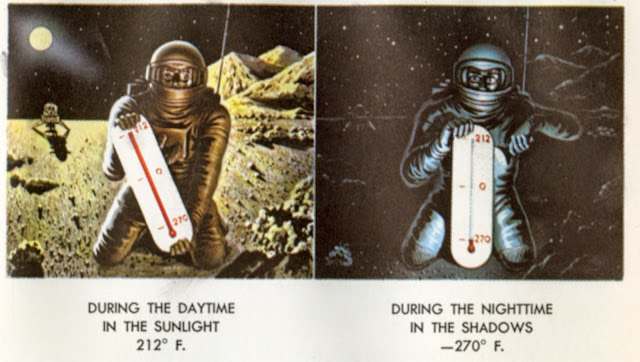It is approaching the 48th anniversary of people's first landing on the Moon. So here is a treasury of contractor's drawings, models, and paintings on how exploration of the Moon might work. Some of these will be very familiar to you but as a massive collection I highly recommend this vision of the future that was being predicted in 1962. I need to break this one into two parts to share as many of these images as I can.
Rush, Hanniford. Man to the Moon: The Wonderful World of Project Apollo. Chicago: Rand McNally and Co. (96 p.) 27 cm. Softcover. 1962
With lots of photographs of contractor's space art of proposed Apollo designs the text covers the plan to go to the Moon, some of the plans for exploration, Moon colonies, what private life on the Moon might be like, and how we may explore the solar system. Lots of amazing pictures of Moon domes, Moon vehicles, and civilians on the Moon.
Excellent space gadgets! I like how the author "harvested" illustrations from all over the place. There were so many proposals being considered at that time.
For example here is a great set of proposed mission illustrations.
This drawing isn't very accurate but it is dramatic.
Finally, Here is a handful of "Moon Buggies" to get you around.the Moon. Part 2 soon!


















































